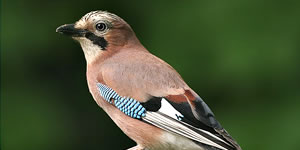It is beguiling, yet appropriate, that the myth or presence of the Green Man has no discernable origin or country. He has no fixed culture or age. He has many names, and many manifestations. He is anscestoral and pastoral.
The Green Man is old and powerful, immortal, a woodland deity, the life-force of all things that grow. He can take the form of a fantastical and grotesque creature or the more natural form of a man. He appears in chapels, churches and cathedrals across most of northern and eastern Europe in wood or stone carvings, evidence that the power of the Green man over all growing things was too strong a symbol for Christianity to suppress, too revered and beloved by the craftsmen who made the carvings.
In times when man's reliance on and union with nature is understood and deep-rooted it figures that a pagan nature-spirit should be so dominant in his psyche. He is the seasonal cycle and life-struggle.
Imagine the land as it was, covered with vast areas of deep, dark forests. They were our oldest sanctuaries. The oak-worshipping druids had a word for a sanctuary that is similar to the Latin nemus; a grove or woodland glade.
When the world was considered to be animate, that included trees and plants.
In his book 'The Golden Bough', published in 1922, James Frazer writes:
"When a tree comes to be viewed not as the body of a tree-spirit but as it's abode, which it can move to and from as it pleases, then instead of seeing each tree as a living, conscious being, man sees it as being inhabited by a supernatural being that enjoys a right of possession and lordship over the trees. ceasing to be a tree-soul, this being becomes a forest god...
...Trees as animate beings are credited with the power of making the rain fall, the sun to shine, flocks and herds to multiply and women to be brought to birth easily.
When an oak is being felled 'it gives a kind of shriek or groan that may be heard a mile off, as if it were the genius of the oak lamenting'".
There are many figures, symbols and rituals around the Green Man and the coming of springtime. Many recognisable representations of the beneficent spirit of the woods and plants. John Barleycorn, Green George, a young man dressed from head to toe in branches, leaves and blossom. The leaf-clad mummer Jack-in-the-Green is covered in holly and ivy, crowned with flowers and ribbons to perform his May Day dance. A king for the May Queen, the young girl dressed in white with a garland of flowers on her head like a bride.
On May Day, children would go into the woods to collect branches of birch, ash, oak, rowan or hawthorn to adorn houses in return for money or food. The 'Maypole' was the name given to the finest, greenest tree that was carried through the village before being placed as a centrepiece to the celebrations and dancing. Often the bark was stripped and the tree decorated with garlands and ribbons.
As the spirit of spring; growth and renewal, death and rebirth, in church carvings the Green Man has a foliate face or mask with tendrils and leaves growing from his eyes, mouth and nose. Or he is carved with acorns and berries to depict the death of the Autumn and Winter months. Even as a skull-head, with worms issuing from the eye sockets and mouth. The decay necessary before new life can begin.
In Simon Armitage's re-telling of the poem 'Sir Gawain and the Green Knight' a wonderful, vivid, description:
"...In all vestments he revealed himself veritably verdant!
From his belt-hooks and buckle to the baubles and gems arrayed so richly around his costume...All the details of his dress are difficult to describe, embroidered as it was with butterflies and birds, green beads emblazoned on a background of gold."
"...No waking man had witnessed such a warrior or weird war-horse - otherworldly, yet flesh and bone.
A look of lightening flashed
from somewhere in his soul.
The force of the man's fist
would be a thunderbolt."
 |
| the Green Man in Greygirl's garden, with hawthorn |

















































